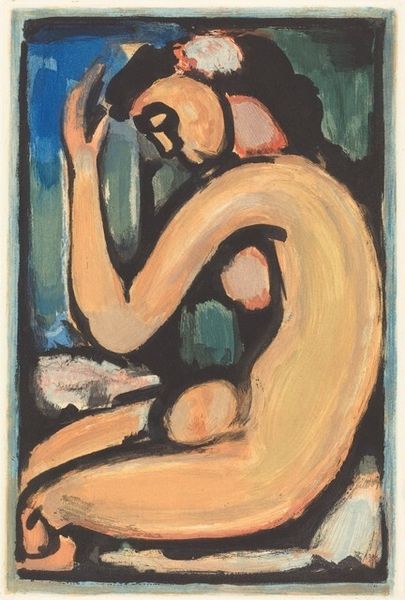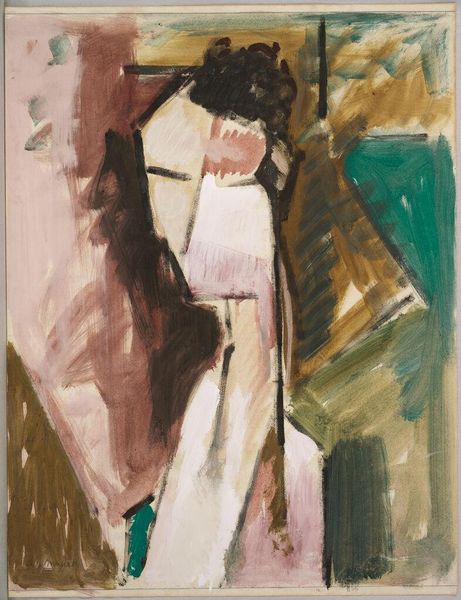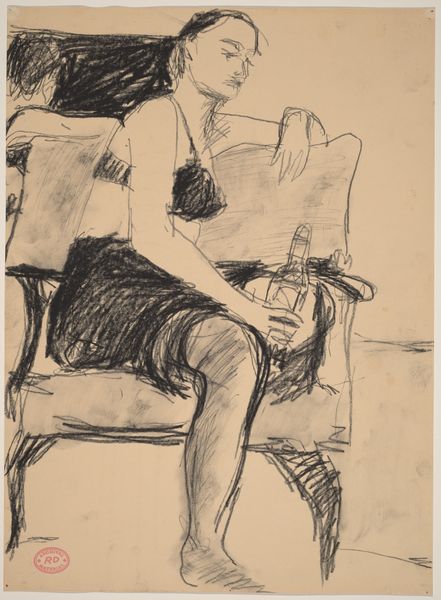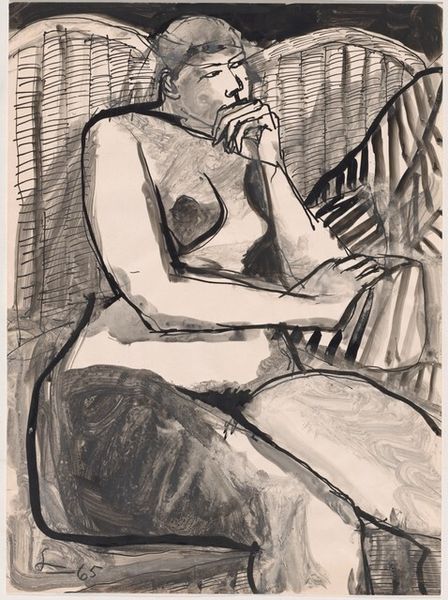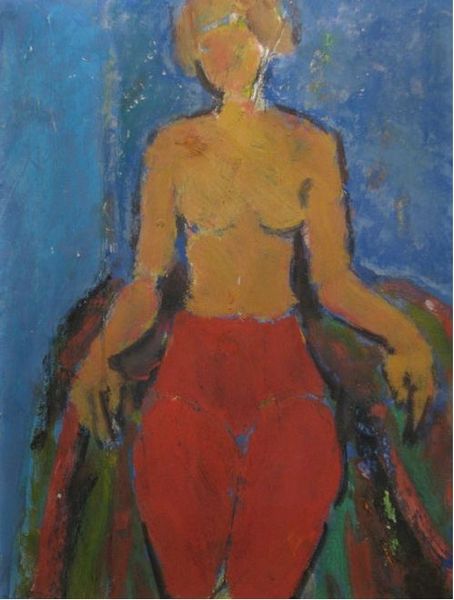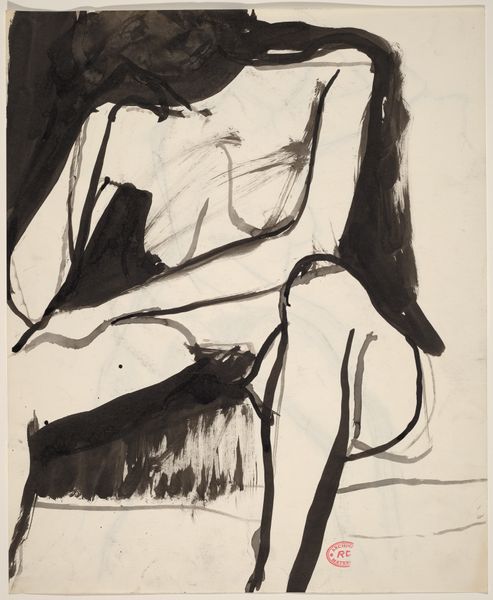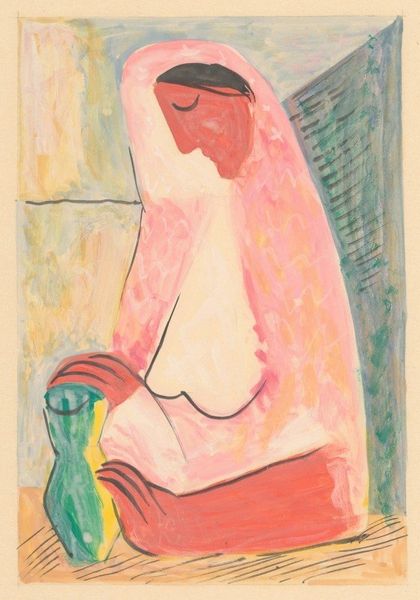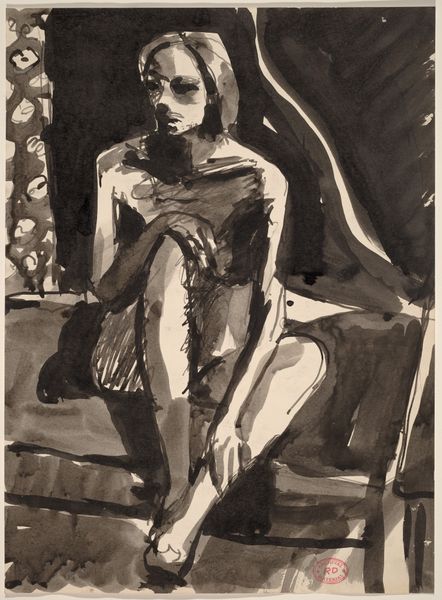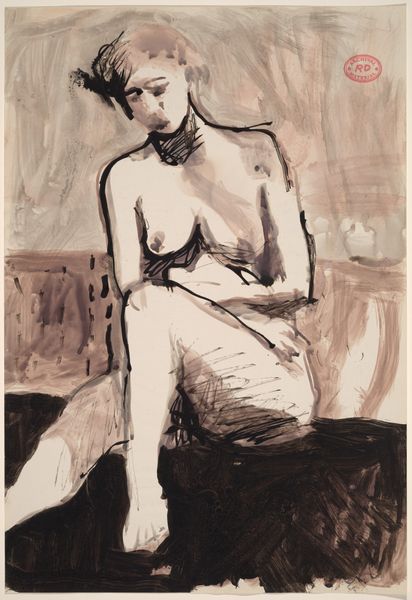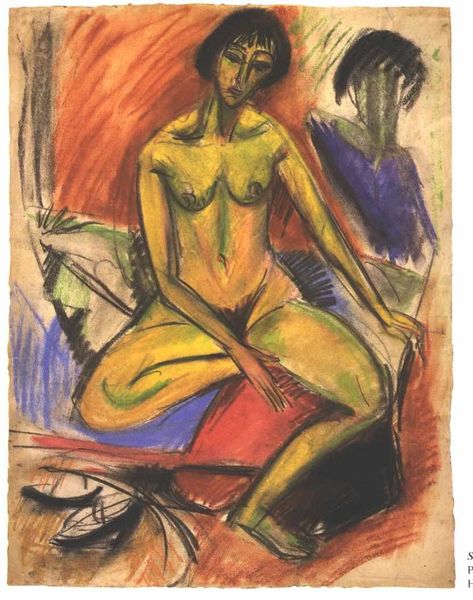
Copyright: National Gallery of Art: CC0 1.0
Curator: Today, we’re looking at "Femme Fière," an etching by Georges Rouault, created between 1936 and 1938. Editor: The first thing that strikes me is the forceful use of line—thick black outlines define the figure against that somewhat turbulent background. It gives her a very monumental presence, doesn't it? Curator: Indeed. Rouault, often associated with Expressionism and Post-Impressionism, consistently explored themes of social injustice and human suffering in his art. He was deeply affected by his observations of marginalized individuals and this clearly shows in his works. Editor: Absolutely. I see how those broad strokes emphasize a kind of raw emotion. The muted palette also contributes—mostly earthy tones, a splash of red, everything feels very deliberate in its somberness. There is a real structural intensity in those color blocks. Curator: Considering his involvement with religious art through stained glass artistry informs his artistic vision too. We could explore how the heavy outlines around the color sections relate to those leaded windows. Also, don’t forget that his father pushed him to enter apprenticeship at 14 in the workshop of a stained-glass maker. So those early works undoubtedly seep into how he perceived lines later on. Editor: Yes! That becomes particularly evident when we consider the way light seems to struggle to define the figure within those forceful lines, or the areas of dense, opaque color, mimicking stained glass but translated into printmaking. We might see him using print as a deliberate way to reach the public sphere, disseminating those kinds of religious art structures. Curator: The title itself, "Femme Fière," which means "Proud Woman" can make us consider whether this woman can truly overcome circumstances created from poverty and/or lack of equality and what pride means in that framework. What are your views of the composition when contemplating from an egalitarian vantage point? Editor: Very astute. I think the simplified forms push the viewer to really look closely, to decipher, even to contend with, what might be hidden in plain sight within the overall framework. Ultimately, it invites introspection. Curator: Thank you for sharing. Considering art through intersectional paradigms certainly reveals how multifaceted art pieces can be. Editor: A fruitful examination; thank you for sharing your insight with me today, also.
Comments
No comments
Be the first to comment and join the conversation on the ultimate creative platform.
